












Last Gasps
Paranormal



The South’s science-based team!
Our trained investigators are here to believe you. Most importantly, we are here to solve the problem...no matter what it takes. Our services are always FREE.

© 2023 Last Gasps paranormal. Links | Terms and Conditions







Masquerade Dupre Excelsior Mill
Atlanta


For a two-day period from the evening of September 12, 2010, through September 14, 2010, agents of the GASPS conducted a formal investigation of the facilities of the Masquerade for paranormal activity.
Written by Kyle T. Cobb, Jr.
Nos tibi credere.
Haunted Places
History
Researching for past information on the facility proved quite difficult because of the lack of concrete history which currently exists. The vast majority of the Internet resources are exact copies of the entry on the Wikipedia site.
Dupre Excelsior Mill is a former excelsior mill located at 695 North Avenue in the Poncey-Highland neighborhood of Atlanta, Georgia. The mill was built in 1890 by DuPre Manufacturing Co. During the late 1970s and 1980s, the buildings were home to an independent pizzeria, complete with a small movie theater and an in-house pipe organ. In 1988, it became the Masquerade, now a well-known nightclub and concert venue for both indoor and outdoor shows, mostly of alternative music styles such as Metal, Punk Rock, Rockabilly, and Techno.
Based on the best records available, the Dupre Mill become active around 1890; however actual construction ranges from 1876 until 1890, depending on the source. At the time of activation, the Mill was a fraction of
its current size, occupying only a portion of the Purgatory building. The Heaven/Hell buildings (warehouses 1 and 2,) according to several accounts were built around 1895 (which may account for the difference in reported ages of the facility). (cite)
Interestingly, in contradiction to some of the research material, North Avenue did not reach the Dupre mill location as of 1899. Because the mill is absent from this map, all the previous dates may be incorrect. And it may not have been opened until after 1900 or later. (Cite)
When the Mill first appears on the Sanborn-Perris Map Company’s maps, Angier Avenue was the only road near it and that ran North/South. North Avenue East ended on the opposite side of the rail track and North Avenue West ended at Randolph. (Cite) The City agreed in 1925 to extend North Avenue as part of the opening of Sears, Roebuck & Company's giant Atlanta retail store. (Cite)
According to an article in the Atlanta Constitution on September 29, 1886, it appears the output of the excelsior mill could be between about 1,600 and 2,000 pounds a day of excelsior depending on the skill of the manager. The excelsior mill run by the Georgia Spring Bed Company at the time consumed 25-30 tons of the excelsior itself and the other excelsior mill run by the Georgia Marble works in the Marietta area produced “8 tons” a month for their own use). (Atlanta Constitution, 29 September 1886, “Diversified Industries”)
All of the Atlanta area mills used Linn or Basswood (Tilia americana) (cite) as its raw material.
Excelsior was produced in three qualities: fine, medium and course. Based on the output, most likely the Dupre Mill generated course excelsior.
The actual operation would have required one man to actually run the machines and “a boy” to help run up to 4 additional machines.
The actual equipment required to run the mill was relatively simple:
- A small emery grinding machine
- A grind stone
- A saw table
- A bailing press.
- An engine and a boiler
In 1886, the cost for the actual excelsior grinder was $125.00 for the best grade on the market.
The actual cost to make the product is almost equal to the freight to ship it. So, home creation was about half the price of outsourcing.
According to an excelsior mill owner, the operation of the mill was simple:
“A century ago, there was no foam rubber in furniture; they padded it with wood shavings… Bearings weren’t oil-lubricated; they were packed tightly with lead. When you started the mill, it caused great friction when they began moving. It would melt the lead, which was a fantastic lubricant. Every bearing was floating on a pool of molten lead. Then everything would fly… Eight machines fitted with knife blades were connected to the mill’s main support beams. The building’s structure was constructed around these machines. Logs were brought to the mill, cut to length, loaded into a trolley cart and fed into the machines. Each machine’s drive shaft was powered from the main axle by a belt. It rode up and down, shaving off slices of excelsior, which would accumulate on the back side. When 200 pounds of shavings had been piled onto the large floor scale, the material was loaded into the baler where it was compressed and tied into a bale in preparation for shipping.
The baler was filled with 200 pounds of excelsior. Its bottom would rise, compressing the bale, which was then tied and exited through the side door.” (Cite)
According to most records, the Mill operated daily until the mill strikes of 1914-1915, which shut all the mills in the Atlanta area down for short periods. In 1914, a strike began against Fulton Bag and Cotton Mills, triggered by management's disapproval of the growing efforts among the workers to join the United Textile Workers. Besides the issue of unionization, the strikers demanded an increase in wages, a 54-hour work week, and a decrease in the use of child labor. The strike gained national attention when the newly formed US Commission on Industrial Relations sent representatives to Atlanta to gather testimonies in March 1915. The strike ultimately failed in May 1915. (Cite) This temporarily consumption point disruption eliminated the demand for the excelsior.
1917 brought the US entry in the war and the output from the mill was diverted to an unspecified war use. By December 1918, the mill had returned to normal operations and output. The salary for the operator averaged $11.00-$14.00 weekly.
Post-depression era saw an expansion of the Mill in the late 1930’s and early 1940’s. Unfortunately, after the Second World War, the demand for excelsior was radically reduced. The introduction of foam rubber virtually eliminated the use of excelsior as stuffing material. Even so, the secondary packing material market continued for a short time.
By the mid 1960s, the demand for excelsior was gone and the Mill operated more as a storage facility than active production facility. In 1977, all the major mills in the Atlanta area shut their doors.
In 1977-1978, the Mill was converted over to a pizzeria and barrio by the owners of the Mellow Mushroom pizza chain as the third restaurant in their group. Featuring everything from movies to bands to Shakespearian plays over its decade long run, the pizza and barrio house survived until 1989. The Excelsior Mill is fondly remembered by Blues fans as the residence in later years of Blues legend Willie "Piano Red" Perryman.16
In September 1989, the Masquerade opened.
Deaths at the Facility
In researching the history of the facility, it appears that there was only one documented death that occurred in the facility prior to 1940. Hubert Neal was killed on July 17, 1899, when he became caught in a conveyor belt.
The accident as reported in the Atlanta Constitution:
Saturday afternoon at 5 o'clock G. Hubert Neal, the foreman of the Atlanta Excelsior works, met with a frightful accident and received injuries from which he died at the Grady hospital Saturday night about 11 o' clock.
Neal was standing near the shafting in the excelsior works when one of the belts slipped or broke. He either tried to catch the belt to fix it or was tangled with the belt and could not extricate himself.
When he was first seen after the accident, he was being hurled around the shafting, his body striking first the ceiling and then the floor. One of the workmen stated that he believed the unfortunate man was carried around at least a thousand times before he was extricated.
As quickly as possible, after the accident was known, the machinery was stopped and Neal conveyed to Grady hospital in ambulance.
The hospital physicians found that the man's arms and legs had been broken in several places and one of his knees was beaten almost into pulp. if there were any internal injuries or wounds about the body other than the fractured limbs the physicians did not know. The fearful shock was enough of itself to cause death and six hours after he was carried to the hospital Neal breathed his last....
Beyond this event no other records of fatal incidents appear for the facility. It should be noted that unless the injured party was taken to the hospital, many mill worker deaths went unreported in the 19th century.


1892 map showing area where Dupre Mill should be as still undeveloped.
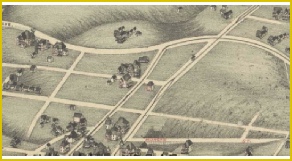

Arnold via Morgan Road is the closest road to the Mill location in 1899 according to the Insurance maps of Atlanta, Georgia, 1899, Sanborn-Perris map
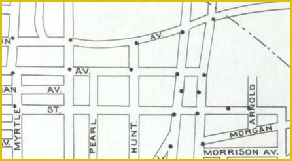


1911 map showing the Mill in plat 250 (Insurance maps of Atlanta, Georgia, Volume 2, 1911, Sanborn-Perris Map Co. Limited, )
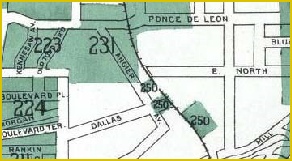


1911 map of the DuPree Mill
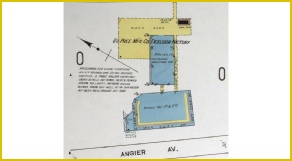


Example of Fine excelsior wood



A picture of excelsior bailing press and the grinding machines.
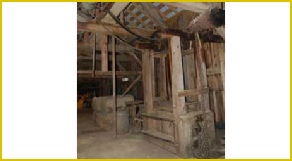


Masquerade Dupre Excelsior Mill construction Phases
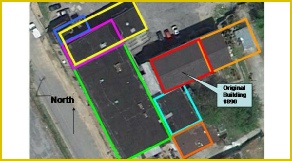

1979 photo of the Mill from the Georgia History Center.
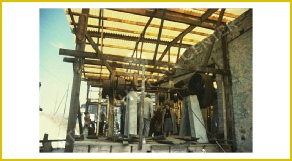

1989 photo of the mill (uncredited)
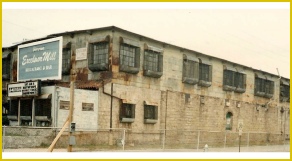

Article states “Neal is killed by a Loose Belt - Hurled Against Floor and Ceiling by Belt Which Held Him... Arms and legs broken…”
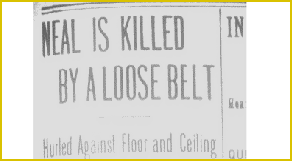
| Paranormal Books |
| Apparitions |
| Cryptids |
| Demons |
| Orbs |
| Poltergiest |
| Residual Hauntings |
| Shadow People |
| West Demons |
| Ouija and Zozo |
| Exorcisms |
| Anneliese Michel |
| Ronald Hunkeler |
| Anna Ecklund |
| LaToya Ammons |
| George Lukins |
| Christian Demon texts |
| Roman Rite 1614 |
| Roman Rite 1998 |
| Eastern Demons |
| FAQ |